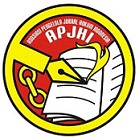Penggunaan Asas Beban Pembuktian Terbalik sebagai Penyelesaian Perkara Kesalahan yang Dilakukan Oleh Dokter
 ), Slamet Sampurno Soewondo(2), Sabir Alwi(3)
), Slamet Sampurno Soewondo(2), Sabir Alwi(3)
(1) Pascasarjana Ilmu Hukum Universitas Hasanuddin, Makassar, Indonesia
(2) Pascasarjana Ilmu Hukum Universitas Hasanuddin, Makassar, Indonesia
(3) Pascasarjana Ilmu Hukum Universitas Hasanuddin, Makassar, Indonesia
 Corresponding Author
Corresponding Author
Abstract
This study aims to identify and analyze criminal procedural law arrangements in resolving cases of wrongdoing committed by doctors; and legal protection for patients in reverse proof of the settlement of wrongdoing by doctors. The research method used is normative juridical research, the type of research is descriptive analytical. The source of legal materials is primary and secondary legal materials. The technique of collecting legal materials is carried out by library research on legal materials, both primary legal materials, secondary legal materials, to complement the legal materials collected, interviews are conducted with experts or resource persons selected based on the authority exercised by the relevant In this paper, analysis of legal materials is descriptive qualitative, namely identifying primary and secondary legal materials that will be carried out in analyzing problems in a series of processing stages by carrying out an inventory, systematizing, to make it easier to analyze these problems. Based on the analysis, the authors conclude several things, including: (1) the system of proof of criminal procedural law in the process of resolving a case of wrongdoing committed by a doctor still uses the usual burden of proof as stated in article 66 of the criminal procedural code ( KUHAP); (2) providing legal protection to patients under the burden of proof reversed on the settlement of wrongdoing committed by doctors can be seen using: 1. Philosophical Approach, 2. Juridical Approach, 3. Theoretical Approach, and 4. Social Approach.
Keywords
DOI
10.47268/sasi.v27i2.426
Published
2021-06-04
How To Cite
@article{SASI426,
author = {Randika Darmawan and Slamet Soewondo and Sabir Alwi},
title = {Penggunaan Asas Beban Pembuktian Terbalik sebagai Penyelesaian Perkara Kesalahan yang Dilakukan Oleh Dokter},
journal = {SASI},
volume = {27},
number = {2},
year = {2021},
keywords = {Error; Reversed Evidence; Legal Protection.},
abstract = {This study aims to identify and analyze criminal procedural law arrangements in resolving cases of wrongdoing committed by doctors; and legal protection for patients in reverse proof of the settlement of wrongdoing by doctors. The research method used is normative juridical research, the type of research is descriptive analytical. The source of legal materials is primary and secondary legal materials. The technique of collecting legal materials is carried out by library research on legal materials, both primary legal materials, secondary legal materials, to complement the legal materials collected, interviews are conducted with experts or resource persons selected based on the authority exercised by the relevant In this paper, analysis of legal materials is descriptive qualitative, namely identifying primary and secondary legal materials that will be carried out in analyzing problems in a series of processing stages by carrying out an inventory, systematizing, to make it easier to analyze these problems. Based on the analysis, the authors conclude several things, including: (1) the system of proof of criminal procedural law in the process of resolving a case of wrongdoing committed by a doctor still uses the usual burden of proof as stated in article 66 of the criminal procedural code ( KUHAP); (2) providing legal protection to patients under the burden of proof reversed on the settlement of wrongdoing committed by doctors can be seen using: 1. Philosophical Approach, 2. Juridical Approach, 3. Theoretical Approach, and 4. Social Approach.},
issn = {2614-2961}, pages = {136--148} doi = {10.47268/sasi.v27i2.426},
url = {https://fhukum.unpatti.ac.id/jurnal/sasi/article/view/426}
}
Jurnal
[1] Dali, M. A., & Kasim, W. (2019). Aspek Hukum Informed Consent dan Perjanjian Terapeutik. Akademika, 8(2), 95-106.
https://doi.org/10.31314/akademika.v8i2.403
[2] Darmadi, A. S. M. Y. (2018). Pertimbangan Hakim Dalam Menjatuhkan Putusan Pidana Bersyarat. Jurnal Advokasi, 8(2), 179-191.
[3] Erdiansyah. (2016), Pertanggungjawaban Pidana Terhadap Dokter Atas Kesalahan Dan Kelalaian Dalam Memberikan Pelayanan Medis Di Rumah Sakit, Jurnal Ilmu Hukum, 3(2).
[4] HZ, E. D. (2013). Perlindungan Hukum Terhadap Anak Dari Konten Berbahaya Dalam Media Cetak Dan Elektronik, Jurnal Ilmu Hukum, 4(1), 1-20. DOI: http://dx.doi.org/10.30652/jih.v3i1.1036.
[5] Irwanda, E. A., & Din, M. (2020). Kekuatan Alat Bukti Perkara Zina dalam Perspektif Kitab Undang-Undang Hukum Acara Pidana dan Qanun Hukum Acara Jinayat. Jurnal Ilmiah Mahasiswa Bidang Hukum Pidana, 4(3), 556-566.
[6] Maggalatung, A. S. (2014). Hubungan Antara Fakta Norma, Moral, Dan Doktrin Hukum Dalam Pertimbangan Putusan Hakim. Jurnal Cita Hukum, 2(2).
https://doi.org/10.15408/jch.v1i2.1462
[7] Nakamnanu, M. J. (2016), Kekuatan Pembuktian Alat Bukti Informasi Atau Dokumen Elektronik Dalam Peradilan Perkara Pidana Korupsi, Jurnal Hukum.
[8] Ratnasari, D., Lasmadi, S., & Sudarti, E. (2021). Kedudukan Hukum Deponeering dalam Sistem Peradilan Pidana. PAMPAS: Journal of Criminal Law, 2(1), 17-29.
https://doi.org/10.22437/pampas.v2i1.12053
[9] Sengi, E. (2019). Konsep Culpa Dalam Perkara Pidana Suatu Analisis Perbandingan Putusan Nomor 18/Pid. B/2017/PN. Tobelo. Era Hukum-Jurnal Ilmiah Ilmu Hukum, 17(2).
https://doi.org/10.24912/erahukum.v17i2.5993
[10] Tambunan, L. (2014), Implementasi Perlindungan Hukum Terhadap Anak Sebagai Korban Kekerasan Psikis Dalam Rumah Tangga, Jurnal Hukum, 1-24, http://e-journal.uajy.ac.id/7172/.
Buku
[11] Ali, A. (2017). Menguak Tabir Hukum: Ed. 2, Jakarta: Kencana. 2017.
[12] Ilyas, A., & Mustamin, M. (2012). Asas-Asas Hukum Pidana: Memahami Tindak Pidana dan Pertanggungjawaban Pidana sebagai Syarat Pemidanaan: Disertai Teori-Teori Pengantar dan Beberapa Komentar. Yogyakarta: Rangkang Education & PuKAP-Indonesia.
[13] Indrati, Maria Farida S. (2007). Ilmu Perundang-Undangan: Proses Dan Teknik Pembentukannya, Yogyakarta: Kanisius.
[14] Marzuki, P. M. (2017). Penelitian Hukum. Edisi Revisi, Jakarta: Kencana. 2008.
[15] Mussakir. (2013) Putusan Hakim Yang Diskriminatif Dalam Perkara Pidana Suatu Tinjauan Sosiologi Hukum Dan Dan Psikologi Hukum. Yogjakarta: Mahakarya Rangkang Offset.
[16] Soekanto, S. (2006). Pengantar Penelitian Hukum, Jakarta: UI Press.
| Dublin Core | PKP Metadata Items | Metadata for this Document | |
| 1. | Title | Title of document | Penggunaan Asas Beban Pembuktian Terbalik sebagai Penyelesaian Perkara Kesalahan yang Dilakukan Oleh Dokter |
| 2. | Creator | Author's name, affiliation, country | Randika Fitrah Darmawan; Pascasarjana Ilmu Hukum Universitas Hasanuddin, Makassar; Indonesia |
| 2. | Creator | Author's name, affiliation, country | Slamet Sampurno Soewondo; Pascasarjana Ilmu Hukum Universitas Hasanuddin, Makassar; Indonesia |
| 2. | Creator | Author's name, affiliation, country | Sabir Alwi; Pascasarjana Ilmu Hukum Universitas Hasanuddin, Makassar; Indonesia |
| 3. | Subject | Discipline(s) | |
| 3. | Subject | Keyword(s) | Error; Reversed Evidence; Legal Protection. |
| 4. | Description | Abstract | This study aims to identify and analyze criminal procedural law arrangements in resolving cases of wrongdoing committed by doctors; and legal protection for patients in reverse proof of the settlement of wrongdoing by doctors. The research method used is normative juridical research, the type of research is descriptive analytical. The source of legal materials is primary and secondary legal materials. The technique of collecting legal materials is carried out by library research on legal materials, both primary legal materials, secondary legal materials, to complement the legal materials collected, interviews are conducted with experts or resource persons selected based on the authority exercised by the relevant In this paper, analysis of legal materials is descriptive qualitative, namely identifying primary and secondary legal materials that will be carried out in analyzing problems in a series of processing stages by carrying out an inventory, systematizing, to make it easier to analyze these problems. Based on the analysis, the authors conclude several things, including: (1) the system of proof of criminal procedural law in the process of resolving a case of wrongdoing committed by a doctor still uses the usual burden of proof as stated in article 66 of the criminal procedural code ( KUHAP); (2) providing legal protection to patients under the burden of proof reversed on the settlement of wrongdoing committed by doctors can be seen using: 1. Philosophical Approach, 2. Juridical Approach, 3. Theoretical Approach, and 4. Social Approach. |
| 5. | Publisher | Organizing agency, location | Faculty of Law, Universitas Pattimura |
| 6. | Contributor | Sponsor(s) | |
| 7. | Date | (YYYY-MM-DD) | 2021-06-04 |
| 8. | Type | Status & genre | Peer-reviewed Article |
| 8. | Type | Type | |
| 9. | Format | File format | PDF, XML |
| 10. | Identifier | Uniform Resource Identifier | https://fhukum.unpatti.ac.id/jurnal/sasi/article/view/426 |
| 10. | Identifier | Digital Object Identifier | 10.47268/sasi.v27i2.426 |
| 11. | Source | Title; vol., no. (year) | SASI; Vol 27, No 2 (2021): Volume 27 Nomor 2, April - Juni 2021 |
| 12. | Language | English=en | en |
| 13. | Relation | Supp. Files | |
| 14. | Coverage | Geo-spatial location, chronological period, research sample (gender, age, etc.) | |
| 15. | Rights | Copyright and permissions | Copyright: Authors who publish their manuscripts in this Journal agree to the following conditions: 1. The copyright in each article belongs to the author, as well as the right to patent. 2. Authors can enter into separate, additional contractual arrangements for the non-exclusive distribution of the journal's published version of the work (e.g., post it to an institutional repository or publish it in a book), with an acknowledgment of its initial publication in this journal. 3. Authors are permitted and encouraged to post their work online (e.g., in institutional repositories or on their website) before and during the submission process, as it can lead to productive exchanges, as well as earlier and greater citation of published work. 4. Authors have the right to self-archiving of the article (Author Self-Archiving Policy)
License: The SASI Journal is disseminated based on the Creative Commons Attribution-NonCommercial 4.0 International license terms. This license allows anyone to copy and redistribute this material in any form or format, compose, modify, and make derivatives of this material for any purpose. You cannot use this material for commercial purposes. You must specify an appropriate name, include a link to the license, and certify that any changes have been made. You can do this in a way that is appropriate but does not imply that the licensor supports you or your use.
|
Copyright (c) 2021 Randika Fitrah Darmawan, Slamet Sampurno Soewondo, Sabir Alwi

This work is licensed under a Creative Commons Attribution-NonCommercial 4.0 International License.

 : 3612 times
: 3612 times Download : 1729 times
XML
Download : 1729 times
XML 















